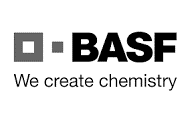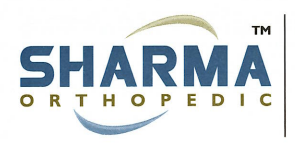6th April 2023
The Chief Manager, Business Intelligence & Analysis
Kenya Revenue Authority
Times Towers
Nairobi, Kenya
Dear Sir,
REF: Objection to Proposed Classification of Ceramic Moulding Machines
We refer to SAD, number xxxxxxxx. The declaration is for the importation of ceramic sanitary ware moulding machine in CKD. The various components will be assembled to form one unit. The detailed technical data sheet illustrates and confirms that the moulding machine and wastewater/sludge purifying machine will be assembled to form one unit. The moulding machine and the sludge purifying machine should have been classified under heading 8474. This was realised after consultations with the manufacturer and the importer. The classification of the components was done by reference to the invoice which was not laid out as per the rules of classification of machines in chapter 84. KRA officers have therefore proposed that the wastewater purifying machine should be classified under subheading 8421.29.00. The wastewater purifying machine is not equivalent to sewage treatment plant. This refers to sludge containing minerals, ceramic raw materials mixed in water and other chemicals. We have classified the item under subheading 8421.21.00. This is also incorrect We are writing to object to KRA’s proposed classification as well as illustrate why the whole system should be classified under heading 8474.
The structure of the objection is sectionalised as follows:
- Relevant Legal Notes
- Implications of the Legal Notes to the Classification.
- Analysis of WCO Rulings
- Conclusion
Our commentary on each section is highlighted in blue.
Section XV Legal Notes
SECTION XVI: MACHINERY AND MECHANICAL APPLIANCES; ELECTRICAL EQUIPMENT; PARTS THEREOF; SOUND RECORDERS AND REPRODUCERS, TELEVISION IMAGE AND SOUND RECORDERS AND REPRODUCERS, AND PARTS AND ACCESSORIES OF SUCH ARTICLES
Notes.
3.‑ Unless the context otherwise requires, composite machines consisting of two or more machines fitted together to form a whole and other machines designed for the purpose of performing two or more complementary or alternative functions are to be classified as if consisting only of that component or as being that machine which performs the principal function.
Implication of Note 3 Section XVI
Note 3 tells us that composite machines are to be classified in the heading that covers the machine that performs the principal function. The ceramic moulding machine and the sludge treatment machine perform complementary functions. They are to be classified as a unit under heading 8474.
(Section Note 3) Explanatory Notes in Detail
Composite machines consisting of two or more machines or appliances of different kinds, fitted together to form a whole, consecutively or simultaneously performing separate functions which are generally complementary and are described in different headings of Section XVI, are also classified according to the principal function of the composite machine.
The complementary machines are of different kinds, different headings in the nomenclature, but once fitted together,to form a whole, and simultaneously perform complementary functions , they have to be classified in one heading. The ceramic moulding machines and the resulting sludge treatment machine will be classified as one unit under heading 8474.
Examples of Such Machines as per the WCO Explanatory Notes(Application of Note 3 Section XVI)
The following are examples of such composite machines : printing machines with a subsidiary machine for holding the paper (heading 84.43); a cardboard box making machine combined with an auxiliary machine for printing a name or simple design (heading 84.41); industrial furnaces combined with lifting or handling machinery (heading 84.17 or 85.14); cigarette making machinery combined with subsidiary packaging machinery (heading 84.78).
Conditions that must be Satisfied for Note 3 Section XVI to be Applicable as per WCO Explanatory Notes
For the purposes of the above provisions, machines of different kinds are taken to be fitted together to form a whole when incorporated one in the other or mounted one on the other, or mounted on a common base or frame or in a common housing.
Assemblies of machines should not be taken to be fitted together to form a whole unless the machines are designed to be permanently attached either to each other or to a common base, frame, housing, etc. This excludes assemblies which are of a temporary nature or are not normally built as a composite machine.
The bases, frames or housings may be provided with wheels so that the composite machine can be moved about as required during use, provided it does not thereby acquire the character of an article (e.g., a vehicle) more specifically covered by a particular heading of the Nomenclature.
Floors, concrete bases, walls, partitions, ceilings, etc., even if specially fitted out to accommodate machines or appliances, should not be regarded as a common base joining such machines or appliances to form a whole.
Analysis of the Conditions that must be satisfied:
- They could be incorporated into one another.
- They could be mounted one on another.
- They could be mounted on a common base or frame or common housing
- The machines are designed to be permanently to each other
- The machines are designed be permanently attached to a common base, frame or housing.
The ceramic moulding machine and the sludge treatment machine satisfy this requirements and therefore will be classified as one unit under heading 8474.
Note 4, Section XVI, WCO Explanatory Notes
4.‑ Where a machine (including a combination of machines) consists of individual components (whether separate or interconnected by piping, by transmission devices, by electric cables or by other devices) intended to contribute together to a clearly defined function covered by one of the headings in Chapter 84 or Chapter 85, then the whole falls to be classified in the heading appropriate to that function.
The note tells us that combinations of machines that are interconnected, and all contribute to one defined function which is covered by a specific heading in chapter 84, the components contributing to that function are to be classified in that heading. In the instant case the ceramic moulding machine and the its sludge treatment machine will therefore be classified in heading 8474.
(Section Note 4) Explanatory Notes in Detail as per WCO
This Note applies when a machine (including a combination of machines) consists of separate components which are intended to contribute together to a clearly defined function covered by one of the headings in Chapter 84 or, more frequently, Chapter 85. The whole then falls to be classified in the heading appropriate to that function, whether the various components (for convenience or other reasons) remain separate or are interconnected by piping (carrying air, compressed gas, oil, etc.), by devices used to transmit power, by electric cables or by other devices.
For the purposes of this Note, the expression “intended to contribute together to a clearly defined function” covers only machines and combinations of machines essential to the performance of the function specific to the functional unit as a whole, and thus excludes machines or appliances fulfilling auxiliary functions and which do not contribute to the function of the whole.
The detailed breakdown of note 4 section XVI further explains the conditions that must be satisfied for classification in one heading of multi heading machines. The ceramic moulding machines and its sludge treatment machine satisfy these requirements. Therefore, they will be classified as one unit.
Examples of Functional Machines as per the WCO Explanatory Notes
The following are examples of functional units of this type within the meaning of Note 4 to this Section :
(1) Hydraulic systems consisting of a hydraulic power unit (comprising essentially a hydraulic pump, an electric motor, control valves and an oil tank), hydraulic cylinders and the pipes or hoses needed to connect the cylinders to the hydraulic power unit (heading 84.12).
(2) Refrigerating equipment consisting of components which are not fitted together to form a whole and are interconnected by means of piping through which the coolant circulates (heading 84.18).
(3) Irrigation systems consisting of a control station comprising filters, injectors, metering valves, etc., underground distribution and branch lines, and a surface network (heading 84.24).
(4) Milking machines with separate component parts (vacuum pump, pulsator, teat‑cups and pails) interconnected by hoses or piping (heading 84.34).
(5) Brewhouse machinery comprising, inter alia, sprouting or germination machines, malt crushing machines, mashing vats, straining vats (heading 84.38). Auxiliary appliances (e.g., bottling machines, label‑printing machines), are however not included and should be classified in their own appropriate heading.
(6) Letter sorting systems consisting essentially of coding desks, pre‑sorting channel systems, intermediate sorters and final sorters, the whole being controlled by an automatic data processing machine (heading 84.72).
(7) Asphalt plant consisting of separate components, such as feed hoppers, conveyors, dryers, vibrating screens, mixers, storage bins and control units, placed side by side (heading 84.74).
(8) Machinery for assembling electric filament lamps, of which the component parts are interconnected by conveyors, and which include equipment for the heat‑treatment of glass, pumps and lamp‑testing units (heading 84.75).
(9) Welding equipment consisting of the welding head or tongs, with a transformer, generator or rectifier to supply the current (heading 85.15).
(10) Portable radiotelephone transmitters and their associated hand microphone (heading 85.17).
(11) Radar apparatus with the associated power packs, amplifiers, etc. (heading 85.26).
(12) Satellite television reception systems consisting of a receiver, a parabolic aerial reflector dish, a control rotator for the reflector dish, a feed horn (wave guide), a polarizer, a low-noise-block (LNB) down converter and an infra-red remote control (heading 85.28).
(13) Burglar alarms, comprising, e.g., an infra‑red lamp, a photoelectric cell and a bell (heading 85.31).
Note 5, Section XVI, WCO Explanatory Notes
5.‑ For the purposes of these Notes, the expression “machine” means any machine, machinery, plant, equipment, apparatus or appliance cited in the headings of Chapter 84 or 85.
The ceramic moulding machine and the sludge treatment machines are all machines as per the definition above.
(V) UNASSEMBLED MACHINES
(See General Interpretative Rule 2 (a))
For convenience of transport many machines and apparatus are transported in an unassembled state. Although in effect the goods are then a collection of parts, they are classified as being the machine in question and not in any separate heading for parts. The same applies to an incomplete machine having the features of the complete machine (see Part (IV) above), presented unassembled (see also in this connection the General Explanatory Notes to Chapters 84 and 85). However, unassembled components in excess of the number required for a complete machine or for an incomplete machine having the characteristics of a complete machine, are classified in their own appropriate heading.
Implication of Note (V) Unassembled Machines
This section note tells that machines imported in separate components are to be classified as the principal machine and not as a collection of parts. The sludge treatment machine will therefore be classified with the ceramic moulding machine. The two machines perform their functions as one interconnected unit. The classification will be heading 8474.
Chapter 84 Explanatory Notes
(B) GENERAL ARRANGEMENT OF THE CHAPTER
(1) Heading 84.01 covers nuclear reactors, fuel elements (cartridges), non-irradiated, for nuclear reactors and machinery and apparatus for isotopic separation.
(2) Headings 84.02 to 84.24 cover the other machines and apparatus which are classified mainly by reference to their function, and regardless of the field of industry in which they are used.
(3) Headings 84.25 to 84.78 cover machines and apparatus which, with certain exceptions, are classified there by reference to the field of industry in which they are used, regardless of their particular function in that field.
Part 3 of the general arrangement of chapter 84 tells us that most headings from 84.25 to 84.78 cover machines by the type of industry that they are used in irrespective of the specific functions of the specific machines. That is if a machine is used in the ceramic making industry and is made up of machines that perform specific functions including those of 84.02 to 84.24 then they will be classified under the specific industry if it has a defined heading in chapter 84.
The rule of precedence for headings 84.01 to 84.24 applies only to machines considered as a whole. Composite machines or multi-function machines are classified in accordance with Note 3 to Section XVI and functional units in accordance with Note 4 to that Section (see Parts (VI) and (VII) of the General Explanatory Note to Section XVI).
This note makes it clear that the machines of 84.01 and 84.24 applies are classified in those headings if they are imported only for the function defined in that heading. If they are imported as part of composite machines, multifunction machines they are to be classified as per the instructions of Section XVI, Note 3 and Note 4. Therefore the ceramic making machine and its sludge treatment plant will be classified under 8474 as one unit.
Heading 84.21 Notes
84.21 ‑ Centrifuges, including centrifugal dryers; filtering or purifying machinery and apparatus for liquids or gases.
‑ Centrifuges, including centrifugal dryers :
8421.11 ‑ ‑ Cream separators
8421.12 ‑ ‑ Clothes‑dryers
8421.19 ‑ ‑ Other
8421.2 ‑ Filtering or purifying machinery and apparatus for liquids :
8421.21 ‑ ‑ For filtering or purifying water
8421.22 ‑ ‑ For filtering or purifying beverages other than water
8421.23 ‑ ‑ Oil or petrol‑filters for internal combustion engines
8421.29 ‑ ‑ Other
‑ Filtering or purifying machinery and apparatus for gases :
8421.31 ‑ ‑ Intake air filters for internal combustion engines
8421.32 ‑ ‑ Catalytic converters or particulate filters, whether or not combined, for purifying or filtering exhaust gases from internal combustion engines
8421.39 ‑ ‑ Other
‑ Parts :
8421.91 ‑ ‑ Of centrifuges, including centrifugal dryers
8421.99 ‑ ‑ Other
This heading covers :
(I) Machines which, by the use of centrifugal force, completely or partly separate substances according to their different specific gravities, or which remove the moisture from wet substances.
(II) Filtering or purifying machinery and apparatus for liquids or gases, other than, e.g., filter funnels, milk strainers, strainers for filtering paints (generally Chapter 73).
(I) CENTRIFUGES, INCLUDING CENTRIFUGAL DRYERS
Most of these machines consist essentially of a perforated plate, drum, basket or bowl, etc., revolving at great speed in a stationary collector, usually cylindrical, against the walls of which the expelled materials are projected by centrifugal force. In some types the substances of different specific gravities are collected at different levels by means of a series of inverted separator cones. In other types the solid ingredients are retained in the perforated revolving drum, basket, etc., and the liquid ingredients expelled. Machines of this latter type may also be used to force liquids to penetrate thoroughly into materials (e.g., in dyeing or cleaning).
The heading includes :
(1) Centrifugal driers for laundries, dyeworks, pulp mills, flour mills, etc.
(2) Sugar refining centrifuges.
(3) Cream separators and centrifugal clarifiers for milk.
(4) Centrifuges for clarifying oils, wines, spirits, etc.
(5) Centrifuges for dehydrating or de‑waxing petroleum products.
(6) Centrifuges for dehydrating wines, tallow, starches, etc.
(7) Nitrating centrifuges for gun‑cotton manufacture.
(8) Separators for yeast cultures.
(9) Centrifuges for the chemical industry (e.g., high‑speed extractors for antibiotics).
(10) Centrifuges, mainly used in laboratories, in which liquids are separated in superimposed layers ready for decantation.
(11) Centrifuges for separating the plasma from blood.
(12) Centrifuges for drying radioactive precipitates.
(13) Centrifuges for extracting honey.
The heading excludes certain other types of machines operating on the centrifugal principle, e.g. :
(a) Special centrifuges, called “gas” centrifuges, for the separation of uranium isotopes (heading 84.01).
(b) Centrifugal pumps for liquids (heading 84.13).
(c) Centrifugal air pumps and blowers (heading 84.14).
(d) Centrifugal bolting (or sifting) machines for the milling industry (heading 84.37).
(e) Centrifugal casting machines for metal (e.g., for cast iron tubes) (heading 84.54), or for unhardened cements (e.g., for casting concrete tubes) (heading 84.74).
(f) Centrifugal grinding machines (heading 84.74).
(g) Centrifugal spin dryers for semiconductor wafer manufacturing (heading 84.86).
Take note that the heading 84.21 excludes machines which would otherwise fall in heading 84.21 but are specifically excluded including those that fall in heading 84.74. That is simply because a machine works based on the centrifugal principal does not confer automatic classification in heading 8421. Note that moulding to shape ceramic pastes, and unhardened cements whose exclusion is specifically mentioned in heading 8421 are indicated by the explanatory notes as classifiable in the same subheading under heading 8474. Classification of the sludge treatment plant has been eliminated for classification on this heading by virtue of Note 3&4 of the section XVI notes.
Heading 84.74 Explanatory Notes
84.74 ‑ Machinery for sorting, screening, separating, washing, crushing, grinding, mixing or kneading earth, stone, ores or other mineral substances, in solid (including powder or paste) form; machinery for agglomerating, shaping or moulding solid mineral fuels, ceramic paste, unhardened cements, plastering materials or other mineral products in powder or paste form; machines for forming foundry moulds of sand.
The composite machinery including the ceramic ware making machines is covered by the part of the Terms of Heading 84.74 ‘’ machinery for agglomerating, shaping or moulding solid mineral fuels, ceramic paste, unhardened cements, plastering materials or other mineral products in powder or paste form; machines for forming foundry moulds of sand.’’ These machines require the sludge processing machine working simultaneously with them as a composite unit.
8474.10 ‑ Sorting, screening, separating or washing machines
The sludge treatment machine will be performing some of the functions described by subheading 8474.10. Recall that this is not wastewater treatment, it carries out separation and treatment of ceramic raw materials, chemicals, minerals, water.
8474.20 ‑ Crushing or grinding machines
‑ Mixing or kneading machines :
8474.31 ‑ ‑ Concrete or mortar mixers
8474.32 ‑ ‑ Machines for mixing mineral substances with bitumen
8474.39 ‑ ‑ Other
8474.80 ‑ Other machinery
8474.90 ‑ Parts
This heading covers :
(I) Machinery of a kind used, mainly in the extractive industries, for the treatment (sorting, screening, separating, washing, crushing, grinding, mixing or kneading) of solid mineral products (in general the products of Section V of the Nomenclature) such as earth (including earth colours), clay, stone, ores, mineral fuels, mineral fertilisers, slag cement or concrete.
Some of the sludge treatment machine’s functions are covered by this note.
(II) Machinery for agglomerating, shaping or moulding solid mineral products in powder or paste form (e.g., agglomerating solid mineral fuels; moulding to shape ceramic pastes, unhardened cements, plastering materials, etc., whether or not with an added binder or filler).
Ceramic ware moulding machines are covered by this note
(III) Machines for forming foundry moulds of sand.
Many machines of this heading combine two or more of the functions in question (e.g., hydraulic sorting and washing, grinding and sorting, grinding and mixing, mixing and moulding machines).
This note emphasizes the point that a lot of machines of this heading are multifunctional and will be remain classifiable in this heading whether or not the component machines have their specific headings.
Certain machines of the kind normally used for the treatment of mineral products can, as a secondary use, also treat non‑mineral products (e.g., wood or bone); such machines remain in this heading. However, the heading does not extend to machinery specially designed for carrying out similar operations on non‑mineral materials (e.g., for sorting or screening wood chips; for grinding wood flour; for grinding or mixing chemicals or organic colouring materials; for grinding bone, ivory, etc.; for agglomerating or moulding cork powder).
Explanatory Notes for Part I
(I) MACHINES REFERRED TO IN CATEGORY (I) ABOVE (MACHINES MAINLY FOR THE EXTRACTIVE INDUSTRIES)
This group includes :
(A) Sorting, screening, separating or washing machines for separating the materials, usually according to the size or weight of the lumps or particles, or for washing the materials free of impurities. These machines include :
The sludge treatment machine, that is the subject of the contested classification performs some of the functions listed by this note.
(1) Roller sorters. These consist of a number of parallel rollers revolving in the same direction in more or less close contact with each other. Each roller has a number of grooves so that, with the adjacent roller, it forms a channel through which the material passing over the rollers can fall if small enough. These channels increase in size along the machine, so that the material falls through the channels and is collected in receptacles below according to the size of the particles.
(2) Screening machines using wire mesh or perforated sheet. The material passes over an inclined screen whose meshes or perforations increase in size towards the lower end. These machines are of two types : in the first type, the wire mesh or perforated sheet is formed into a revolving inclined drum, usually cylindrical or hexagonal (trommels); in the other type, a flat inclined mesh or perforated screen is vibrated or oscillated by the machine.
(3) Rake type sorting machines. The material is sorted by a series of rakes whose teeth are spaced at appropriate distances.
(4) Specialised machines of various types for removing stones, etc., from coal.
(5) Hydraulic washing, separating or concentrating machines. Some simply wash away impurities; others separate out or concentrate the heavier part not held in suspension by the water.
(6) Flotation separating machines, mainly for ore concentration. The crushed ore is mixed with water and certain surface active agents (oil or various chemicals). A film forms on certain of the mineral particles which are then carried to the surface and are removed; in certain cases, the action is accelerated by blowing air into the mixture.
The heading also covers sorting or separating machines incorporating magnetic or electrical devices (e.g., electrostatic separating machines), and machines using electronic or photoelectric detecting devices, for example, sorting equipment for uranium or thorium ore, operating by radioactivity measurement.
The heading does not cover centrifugal sorting machines, i.e., machines in which separation depends entirely on the centrifugal principle that particles of differing specific gravities can be collected at differing distances from the quickly rotating centre (heading 84.21). However, machines in which centrifugal force is used to throw the material against a wire screen remain in this heading.
Conveyor bands used in conjunction with sorting or screening apparatus remain in their own appropriate headings unless forming an integral part of a sorting or screening machine, or unless the conveyor band itself acts as a screening or sorting device (e.g., has perforations for sorting or screening).
(II) AGGLOMERATING, MOULDING OR SHAPING MACHINERY
In general these machines are of one of the three following types :
(i) Various types of presses operating with moulds in which the material previously prepared is agglomerated and pressed into the required shape.
(ii) Large cylinders whose surfaces are fitted with a series of hollows or moulds where the material is pressed into the required shape.
or
(iii) Extruding machines.
This group includes :
(B) Machines for agglomerating or shaping ceramic pastes. These include :
(1) Brick making machines of the press or extrusion types, including machines for cutting the extruded bars into bricks.
(2) Tile moulding machines, including machines for trimming the edges.
(3) Machines for moulding or extruding earthenware pipes.
(4) Bricanion lath making machines. In these, wire mesh is passed through rollers and covered at the intersections with clay.
(5) Potters’ wheels and similar machines on which the ceramic paste is rotated and moulded to shape by hand, or with the aid of tools.
(6) Machinery for moulding porcelain artificial teeth.
Conclusions
- The ceramic ware making machines works in conjunction with the sludge treatment machine, they are complementary to one another and are permanently affixed to one another. Their classification will therefore follow the instructions of Note 3 and 4 of section XVI.
- The sludge treatment machine does not refer to sewage treatment machine. The sludge treatment machine is carries out the following functions in the ceramic extractive industry.
- Describe the functions of ceramic making machine in relation to the treatment plant.
- The taxes paid will be sufficient given that the applicable taxes for heading 8474.80.00 are similar to 8421.21.00
We hereby enclose copies of the following documents for your reference.
- The Technical data sheet.
- Schematic diagram showing the interconnections between the different imported parts.
From our assessment, this sludge treatment should be classified under heading: 8780.80.00 as a result of the implication of notes 3&4 section XVI Notes.
Our Technical experts will be readily available for any clarification required.
A factory visit would confirm the facts listed above and therefore support our proposed classification.
In light of the above, we kindly request you to set aside KRAs proposed tariff classification for above-mentioned product.
Thanking you for your valued consideration.








